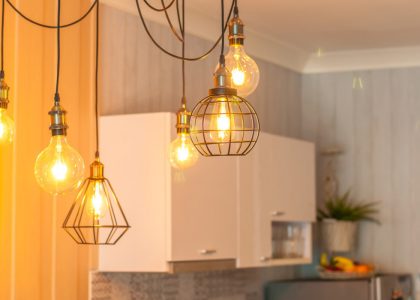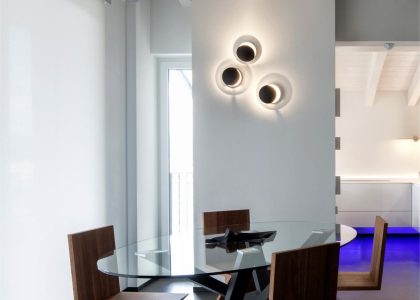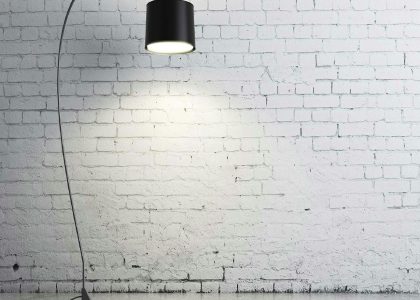Kitchen pendant lights lonzodesign are a type of lighting fixture that hangs from the ceiling and provides focused illumination over a specific area, such as a kitchen island or dining table. They are often used as a decorative element in kitchen design, adding both style and functionality to the space. Pendant lights can help create a warm and inviting atmosphere in the kitchen, while also providing task lighting for activities such as cooking and food preparation.
Types of Kitchen Pendant Lights
There are several different types of pendant lights that can be used in the kitchen, each with its own unique style and design.
1. Mini pendant lights: These are small pendant lights that are typically used in multiples to create a dramatic effect. They are often used over kitchen islands or countertops to provide task lighting.
2. Multi-light pendant lights: These pendant lights feature multiple light sources that are grouped together in one fixture. They can be used to provide both ambient and task lighting in the kitchen.
3. Drum pendant lights: These pendant lights have a cylindrical shape, resembling a drum. They provide a soft and diffused light, making them ideal for creating a cozy and inviting atmosphere in the kitchen.
4. Globe pendant lights: These pendant lights have a spherical shape and provide a 360-degree illumination. They can be used to create a modern and stylish look in the kitchen.
5. Lantern pendant lights: These pendant lights have a lantern-like design, with panels of glass or metal surrounding the light source. They can add a touch of elegance and sophistication to the kitchen.
Choosing the Right Size for Your Kitchen
When choosing pendant lights for your kitchen, it is important to consider the size of the space and the height of the ceiling.
Factors to consider when choosing the size of pendant lights include the size of the kitchen island or dining table, the height of the ceiling, and the overall style and design of the kitchen.
Guidelines for determining the right size of pendant lights for your kitchen include measuring the width and length of the kitchen island or dining table, and choosing pendant lights that are approximately one-third to two-thirds the width of the surface they will be hanging over.
Materials and Finishes for Pendant Lights
Pendant lights are available in a wide range of materials and finishes, allowing you to choose a style that complements your kitchen design.
Common materials used for pendant lights include glass, metal, wood, and fabric. Each material has its own unique characteristics and can create a different look and feel in the kitchen.
Popular finishes for pendant lights include brushed nickel, bronze, chrome, and brass. These finishes can add a touch of elegance and sophistication to the kitchen, while also complementing other fixtures and appliances in the space.
Pros and cons of different materials and finishes include glass pendant lights that can create a sleek and modern look, but may require more frequent cleaning to remove fingerprints and smudges. Metal pendant lights are durable and easy to clean, but may be more prone to scratches and dents. Wood pendant lights can add a natural and rustic touch to the kitchen, but may require more maintenance to keep them looking their best. Fabric pendant lights can create a soft and cozy atmosphere in the kitchen, but may be more difficult to clean and maintain.
Popular Styles for Pendant Lights
Pendant lights are available in a wide range of styles, allowing you to choose a design that matches your personal taste and complements your kitchen decor.
1. Contemporary pendant lights: These pendant lights feature sleek lines, minimalist designs, and modern finishes. They are often used in kitchens with a contemporary or modern design aesthetic.
2. Industrial pendant lights: These pendant lights have a rugged and utilitarian look, often featuring exposed bulbs, metal shades, and vintage-inspired designs. They are often used in kitchens with an industrial or loft-style design.
3. Rustic pendant lights: These pendant lights have a natural and organic look, often featuring wood or metal finishes and earthy colors. They are often used in kitchens with a rustic or farmhouse design aesthetic.
4. Traditional pendant lights: These pendant lights have a classic and timeless look, often featuring ornate details, glass shades, and antique-inspired designs. They are often used in kitchens with a traditional or formal design aesthetic.
5. Transitional pendant lights: These pendant lights have a blend of both contemporary and traditional elements, making them versatile and suitable for a wide range of kitchen designs. They often feature clean lines, neutral colors, and simple yet elegant designs.
Installing Pendant Lights in Your Kitchen

Installing pendant lights in your kitchen can be a relatively simple process, but it is important to follow the proper steps and take safety precautions to ensure a successful installation.
Steps to follow when installing pendant lights include measuring the height at which the pendant lights will hang, marking the location for the ceiling canopy and electrical box, turning off the power to the circuit, connecting the wiring, attaching the canopy to the ceiling, and hanging the pendant lights.
Safety precautions to take when installing pendant lights include turning off the power to the circuit at the breaker box, using a voltage tester to ensure that the power is off before starting any work, and following all manufacturer instructions and local electrical codes.
Hiring a professional electrician vs. DIY installation depends on your level of experience and comfort with electrical work. If you are not confident in your abilities or if you are unsure about any aspect of the installation process, it is always best to hire a professional electrician to ensure that the job is done safely and correctly.
Layering Your Kitchen Lighting with Pendant Lights
Layering lighting in the kitchen is an important aspect of kitchen design, as it helps create a balanced and functional space. Pendant lights can be used as part of a layered lighting scheme to provide both task and ambient lighting in the kitchen.
Importance of layering lighting in kitchen design includes creating a well-lit and functional workspace, enhancing the overall ambiance of the kitchen, and highlighting specific areas or features in the space.
Tips for layering pendant lights with other types of lighting include using recessed lights or track lighting to provide general ambient lighting, using under-cabinet lights or strip lights to provide task lighting, and using pendant lights to provide focused illumination over specific areas such as a kitchen island or dining table.
Maintenance and Cleaning of Pendant Lights
Proper maintenance and cleaning of pendant lights is important to keep them looking their best and functioning properly.
Tips for cleaning pendant lights include turning off the power to the circuit before cleaning, using a soft cloth or sponge dampened with water or a mild cleaning solution to wipe down the pendant lights, avoiding abrasive cleaners or scrub brushes that could scratch the surface, and drying the pendant lights thoroughly after cleaning to prevent water spots or damage.
Common maintenance issues with pendant lights include burnt-out bulbs, loose or damaged wiring, and tarnished or corroded finishes. These issues can often be fixed by replacing the bulbs, tightening any loose connections, or cleaning and polishing the pendant lights.
When to replace pendant lights depends on their condition and functionality. If the pendant lights are damaged beyond repair, if they are no longer functioning properly, or if they no longer fit with your kitchen design aesthetic, it may be time to replace them with new ones.
Energy Efficiency and Cost Savings with LED Pendant Lights
LED pendant lights are a popular choice for kitchens due to their energy efficiency and cost savings. LED stands for Light Emitting Diode, which is a type of semiconductor that emits light when an electric current passes through it.
Benefits of using LED pendant lights include lower energy consumption compared to traditional incandescent or fluorescent lights, longer lifespan, instant on/off functionality, and the ability to dim the lights to create different moods or atmospheres in the kitchen.
Comparison of LED pendant lights with other types of pendant lights includes LED lights being more energy efficient and longer lasting compared to incandescent or fluorescent lights. They also produce less heat, which can help keep the kitchen cooler and reduce the load on the air conditioning system.
Cost savings associated with LED pendant lights include lower energy bills due to their energy efficiency, reduced maintenance costs due to their longer lifespan, and potential rebates or incentives from utility companies for using energy-efficient lighting.
Enhancing Your Kitchen’s Ambiance with Pendant Lights
Pendant lights can play a key role in enhancing the ambiance of your kitchen, creating a warm and inviting atmosphere that is both functional and stylish.
How pendant lights can enhance the ambiance of your kitchen includes providing focused illumination over specific areas such as a kitchen island or dining table, creating a cozy and intimate atmosphere for entertaining or dining, and adding a decorative element that complements the overall design of the space.
Tips for using pendant lights to create a specific mood or atmosphere include choosing pendant lights with warm or soft lighting, using dimmer switches to adjust the brightness of the lights, and positioning the pendant lights at different heights and angles to create visual interest and depth.
Examples of kitchens with well-designed pendant lighting include a modern kitchen with sleek and minimalist pendant lights over a kitchen island, a rustic farmhouse kitchen with wooden pendant lights over a farmhouse table, and a traditional kitchen with ornate glass pendant lights over a formal dining area.









